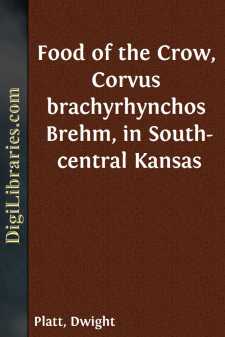Fiction
- Action & Adventure 180
- Biographical 15
- Christian 59
- Classics 6965
- Coming of Age 5
- Contemporary Women 3
- Erotica 8
- Espionage/Intrigue 12
- Fairy Tales, Folklore & Mythology 236
- Family Life 169
- Fantasy 117
- Gay 1
- General 596
- Ghost 32
- Historical 808
- Horror 43
- Humorous 160
- Jewish 25
- Legal 4
- Medical 22
- Mystery & Detective 315
- Political 49
- Psychological 41
- Religious 64
- Romance 159
- Sagas 11
- Science Fiction 730
- Sea Stories 113
- Short Stories (single author) 537
- Sports 10
- Suspense 1
- Technological 8
- Thrillers 2
- Urban Life 31
- Visionary & Metaphysical 1
- War & Military 173
- Westerns 199
Fiction Books
Sort by:
by:
Patrick Wilkins
The thunder of the jets died away, the sound drifting wistfully off into the hills. The leaves that swirled in the air returned to the ground slowly, reluctantly. The rocket had gone. Aron Myers realized that he was looking at nothing. He noticed that his face was frozen into a meaningless smile. He let the smile slowly dissolve as he turned to look at his wife. She was a small woman, and he realized...
more...
FOR BETTER OR WORSE Mr. George Wotton, gently pushing the swing doors of the public bar of the "King's Head" an inch apart, applied an eye to the aperture, in the hope of discovering a moneyed friend. His gaze fell on the only man in the bar a greybeard of sixty whose weather-beaten face and rough clothing spoke of the sea. With a faint sigh he widened the opening and passed through....
more...
by:
Ray Woodward
INTRODUCTION Friendship is essentially the same bond, whether it unites persons of intellect and refined tastes, or those more unfortunate ones, who, perhaps, have no conception of their mission in the world, or of their duty to society. Its manifestations may be wholly different, but the two friendships will have some points in common. In both instances the friends are drawn close together and are...
more...
by:
Anonymous
FOOTSTEPSON THEROAD TO LEARNING;OR THEAlphabet in Rhyme.1850 OR THEALPHABET IN RHYME. I've got a new Book, full of fine pictures, too!And now I will try to read it all through;Thus showing Mamma how good I can be,And how well I remember my A, B, C, D. ASS—BOY—COT—DAME Aa Bb Aa Bb Bb Ais for Ass, for Ape, and for Ark,As well as for Ant and for Ann; Bis...
more...
by:
Clara Bell
THE DUTCH SENSITIVISTS. In the intellectual history of all countries we find the same phenomenon incessantly recurring. New writers, new artists, new composers arise in revolt against what has delighted their grandfathers and satisfied their fathers. These young men, pressed together at first, by external opposition, into a serried phalanx, gradually win their way, become themselves the delight and...
more...
It must be a spirit much unlike my own, which can keep itself in health and vigor without sometimes stealing from the sultry sunshine of the world, to plunge into the cool bath of solitude. At intervals, and not infrequent ones, the forest and the ocean summon meâone with the roar of its waves, the other with the murmur of its boughsâforth from the haunts of men. But I must wander many a...
more...
INTRODUCTION How frequently food poisoning occurs is not definitely known. Everybody is aware that certain articles of food are now and again held responsible for more or less severe "attacks of indigestion" or other physiological disturbances that have followed their consumption, but in many cases the evidence for assuming a causal connection is of the slightest. That convenient refuge from...
more...
by:
Dwight Platt
Introduction The yearly diet of the crow was studied from December, 1952, to February, 1954, in Harvey County and the northeastern townships of Reno County, in south-central Kansas. In the United States much attention has been devoted previously to the food taken by the crow because it is of economic importance. The work of Barrows and Schwarz (1895) was the first of a series of studies made by the...
more...
by:
Graham Lusk
I A BALANCED DIET There is no doubt that under the conditions existing before the war the American people lived in a higher degree of comfort than that enjoyed in Europe. Hard times in America have always been better times than the best times in Europe. As a student in Munich in 1890 I remember paying three dollars a month for my room, five cents daily for my breakfast, consisting of coffee and a roll...
more...
by:
F. E. L. Beal
INTRODUCTION. North American thrushes (Turdidæ) constitute a small but interesting group of birds, most of which are of retiring habits but noted as songsters. They consist of the birds commonly known as thrushes, robins, bluebirds, Townsend's solitaire, and the wheatears. The red-winged thrush of Europe (Turdus musicus) is accidental in Greenland, and the wheatears (Saxicola œnanthe subspp.)...
more...











